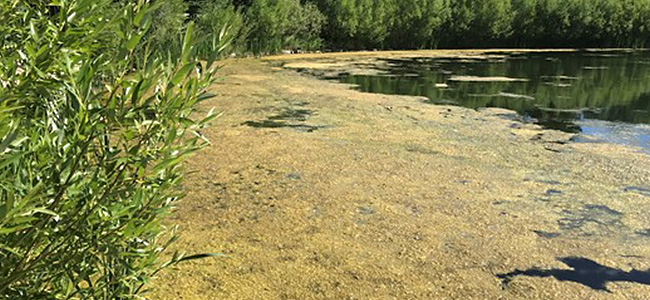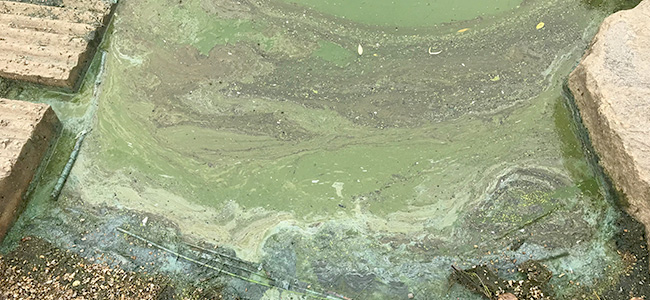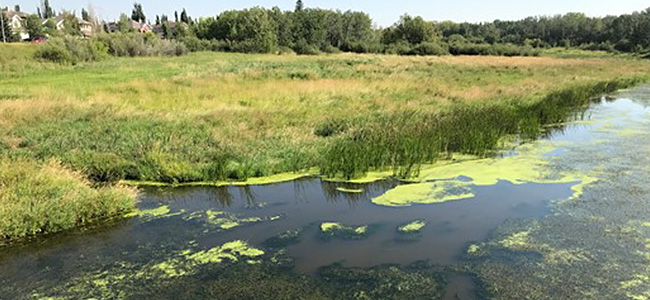
Plants and Algae
The Sturgeon River is home to many native plant species including cattails, sedges, various grasses, bulrushes, willows, alder, fireweed, and balsam poplar. Within the river, there are a few different species of aquatic plants including coontail (or hornwort), northern milfoil, Richardson’s pondweed, sheathed pondweed, sago pondweed and duckweed.
The pondweeds are not actually weeds and are a part of a healthy aquatic ecosystem. Plant growth is heavy in the river because of its high nutrient levels, shallow depth and low flows.
Invasive Species
The Sturgeon River has three invasive aquatic plants within the city limits. These are Himalayan Balsam, Flowering Rush and Purple Loosestrife.
City staff maintain records of where these species are found, how much they spread or are reduced, and are actively trying to control their populations through hand picking.
You can learn more about invasive species and help remove them at the city’s Weed Warriors events. Visit the Weed Warriors page to learn more and register for the next event.
Algae
The Sturgeon River’s low flow rate makes algae growth common along the waterway. Algae gets trapped in the stems of the aquatic vegetation, often forming large mats.

Photo caption: This is harmless algae that grows in waterbodies. It grows in response to warm water and increased nutrient input.
While most algae are harmless, blue-green algae is toxic to humans and dogs if ingested and can cause skin irritation if touched. Blue-green algae may be seen growing in the shallow shoreline areas of the river, which get very warm and provide ideal conditions for its growth. Blue-green algae is common in Alberta and has been found throughout the sediment record in many Alberta lakes, however it is uncommon to have large blooms in rivers.

Photo caption: This is blue-green algae which is toxic to humans and dogs if ingested and can cause skin irritation if touched.
Duckweed is a plant that is often mistaken for algae. Duckweed is actually a small, floating aquatic plant that is eaten by ducks. When the duckweed clumps together, it can look like an algae bloom. The plants are harmless and are important in the aquatic ecosystem.

Photo caption: Bright green is duckweed; dark green are aquatic plants.Related Pages
Last edited: August 9, 2023


